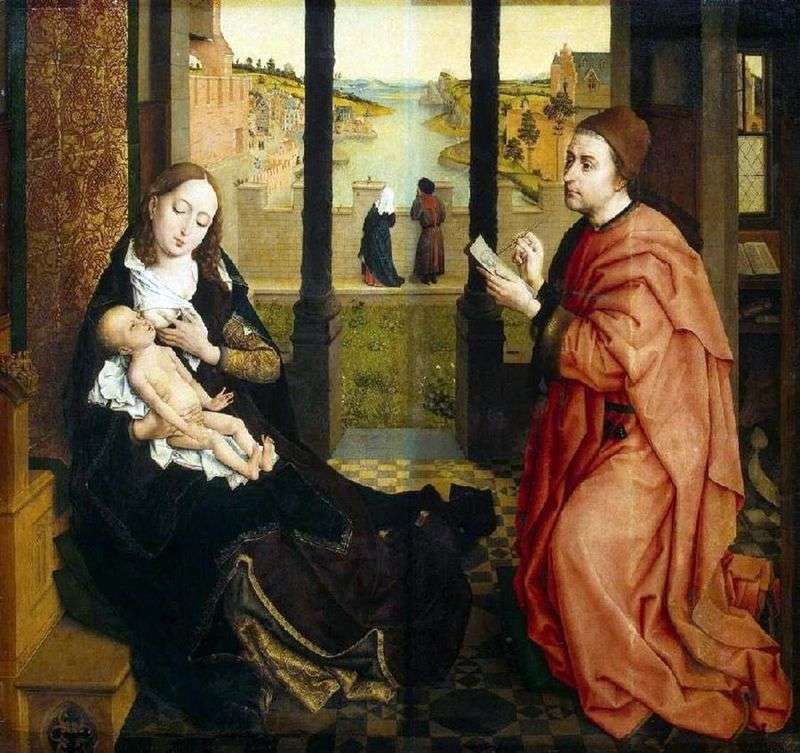
The plot is borrowed from a legend of Greek origin, according to which St. Luke was the first who painted a portrait of the Mother of God. On this basis the artists considered him their patron and in many cities there was a guild of artists, the guild of St. Luke.
In the picture of Rogier van der Weyden, the action takes place in an open loggia. On the left, at the foot of the throne, sits the Madonna, who is breastfeeding the infant of Christ. The throne, reminiscent of her future role of the Queen of Heaven, is decorated with sculptural figures of Adam and Eve, which should remind us of the original sin that Christ and Mary atoned for.
Opposite the Madonna, kneeling respectfully, captures her image of St. Luke. The artist was able to show the inner state of a person associated with a specific situation: the reverent awe and concentration of the artist at the time of the creative process. Behind the back of St. Bows through the slightly opened door are visible the bull and the book – its traditional attributes as one of the authors of the Four Gospels. Here much is typical for the compositions favored by the Netherlands: at least a distant panorama of the city and the canal, written so finely, gently and carefully, with two thoughtful human figures on the bridge.
But the most remarkable is the face and hands of Luke, who writes the Madonna “from nature.” He has a special expression – carefully and reverently vospomlyuschee expression of a man who is all gone into contemplation. So the old Dutch masters looked at nature. Some scholars suggest that Luke’s face is a self-portrait of the artist. There are several versions of this painting in the museums of Boston and Munich.
 Madonna with the Child and the Four Saints by Rogier van der Weyden
Madonna with the Child and the Four Saints by Rogier van der Weyden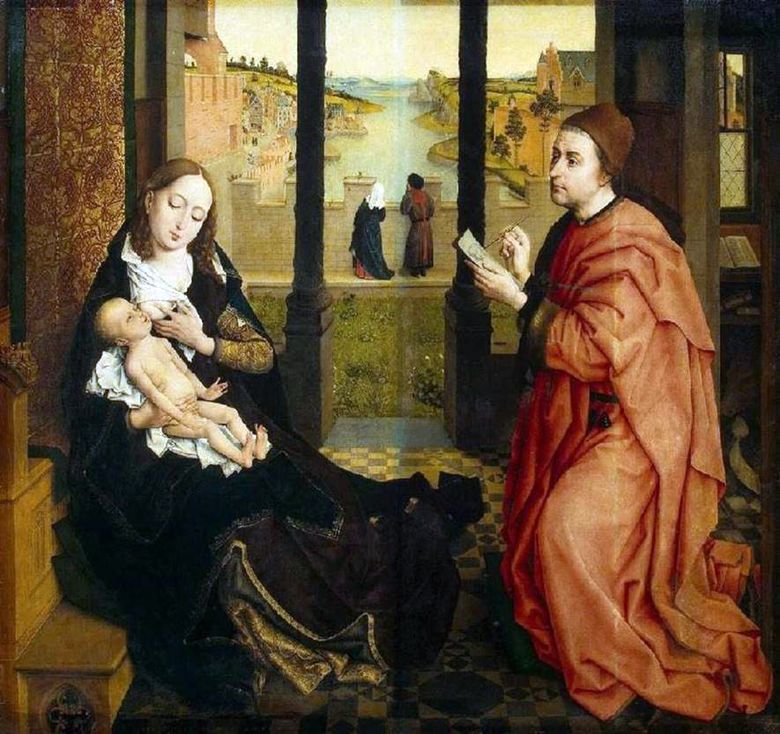 Saint Luc peignant la Vierge – Rogier van der Weyden
Saint Luc peignant la Vierge – Rogier van der Weyden Saint Luke paints a portrait of the Virgin by Giorgio Vasari
Saint Luke paints a portrait of the Virgin by Giorgio Vasari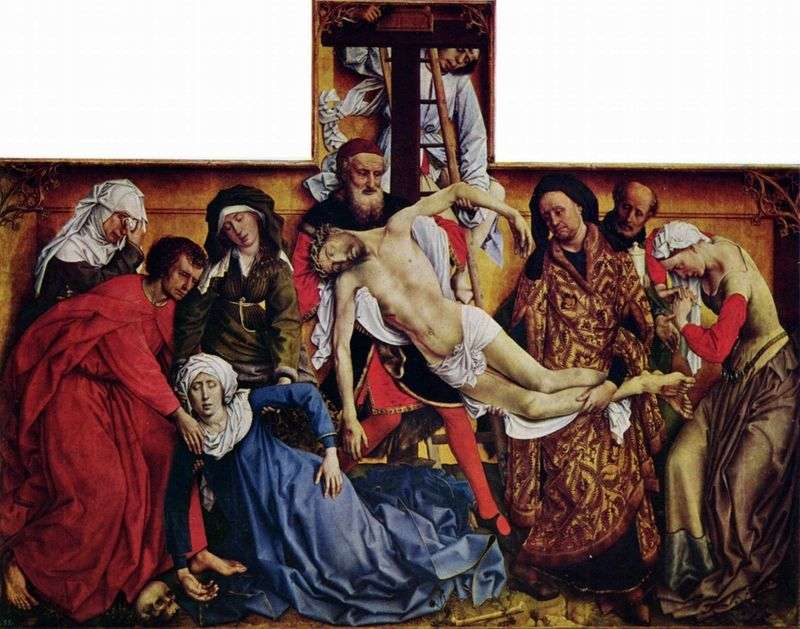 The removal from the cross by Rogier van der Weyden
The removal from the cross by Rogier van der Weyden Triptych of Marriage by Rogier van der Weyden
Triptych of Marriage by Rogier van der Weyden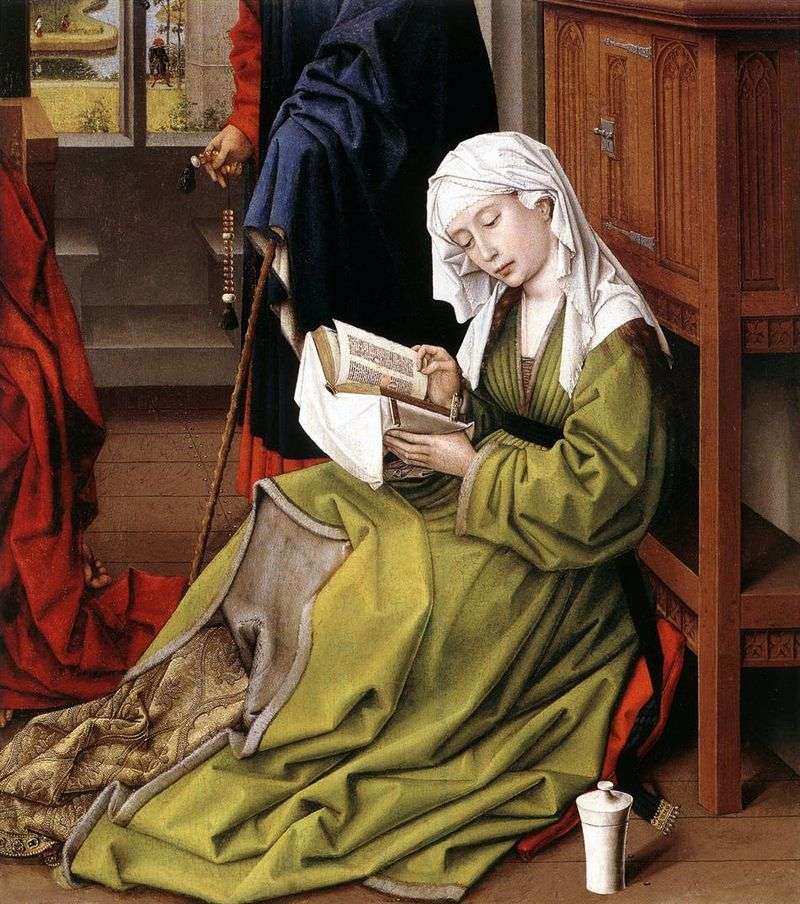 Read Mary Magdalene by Rogier van der Weyden
Read Mary Magdalene by Rogier van der Weyden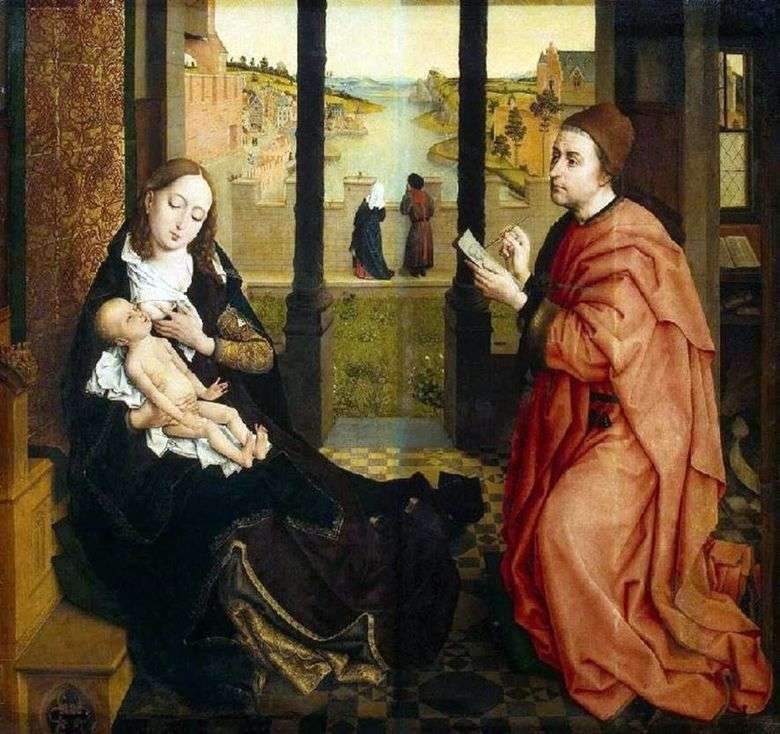 San Lucas, pintando Madonna – Rogier van der Weyden
San Lucas, pintando Madonna – Rogier van der Weyden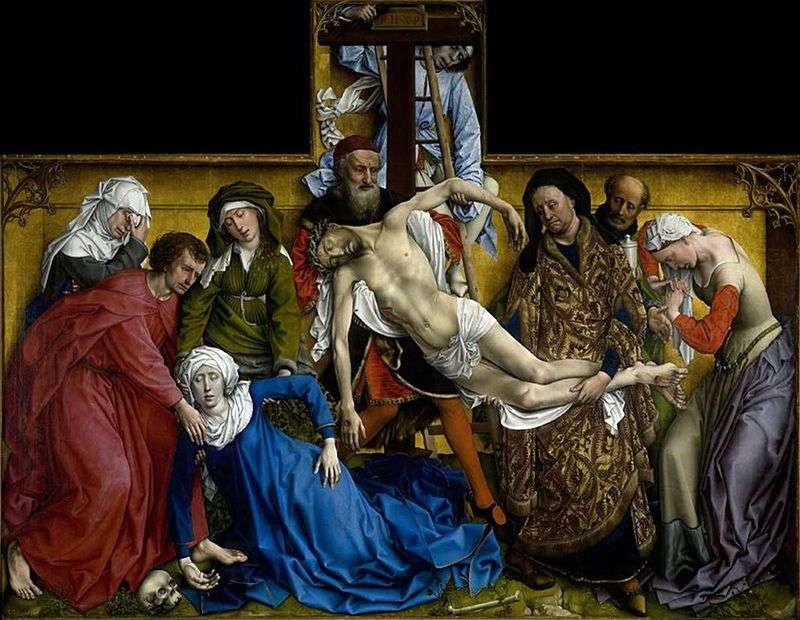 Cake Removal by Rogier van der Weyden
Cake Removal by Rogier van der Weyden